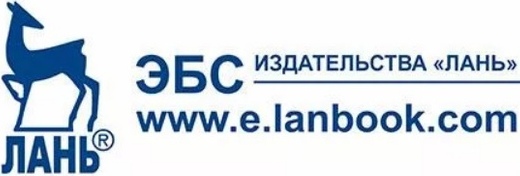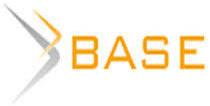The problem of organizing the communicative space of Russian regions in the context of the national project “Science”
The article presents the results of a sociological study of the problems of group formation in regions with different levels of socio-cultural development in 4 subjects of the Russian Federation. Empirical data were obtained during the implementation of an academic project by the Center for Sociology of Management and Social Technologies of the Institute of Sociology of FCTAS of the Russian Academy of sciences under a grant from the Russian Science Foundation (No. 19-18-00345). The article analyzes the specifics of the following terms: communicative space (its form and features), subjects of communication space (both from the point of view of direct participation and from the point of view of the level of interest), innovative development, national projects, modernization and its stages (primary and secondary), socio-cultural development of regions. The article considers the peculiarities of assessment by the regional expert community with management experience of the problems of implementing the national Science Project, as well as the inability of the regions to assess its scientific and technological potential for the communication development of the region. The article reveals the essence of N. I. Lapin's socio-cultural typology about the level of modernization of the Russian Federation's subjects, taking into account their regional differences. The article attempts to assess the possibilities of organizing communicative space in regions with different levels of socio-cultural modernization, as well as the effectiveness of using regional resources for innovative development. The composition and quality of communication between participants (subjects), as well as cultural, historical, and socio-economic features of regions are among the factors that form such a space. All these factors somehow influence the construction of a dialogue between all interested participants, thereby contributing to the organization of the communication space.
Figures

Guseynova, K. E. (2020), “The problem of organizing the communicative space of Russian regions in the context of the national science project”, Research Result. Sociology and management, 6 (4), 169-183, DOI: 10.18413/2408-9338-2020-6-4-0-10.


















While nobody left any comments to this publication.
You can be first.
Adamyants, T. Z. (2005), Social communication, IS RAS, Moscow, Russia. (In Russian).
Atlas of modernization of Russia and its regions: socio-economic and socio-cultural trends and issues: a collective scientific work (2016), in Lapin, N. I. (ed.), Ves Mir, Moscow, Russia. (In Russian).
Balezina, E. A. (2014), “The concept of communication space in an organization”, Vestnik Permskogo universiteta, (4), 90-94. (In Russian).
Bourdieu, P. (1993), Sociology of politics, SocioLogos, Moscow, Russia. (In Russian).
Bourdieu, P. (2007), Sociology of social space, Aleteya, Institut eksperimentalnoy sociologii, Moscow, Russia. (In Russian).
Giddens, E. (2003), Organization of society: Outline of structuration theory, Akademicheskiy proekt, Moscow, Russia. (In Russian).
Hoffman, I. (2000), Presenting yourself to others in everyday life, Kanon-Press-C, Kuchkovo pole, Moscow, Russia. (In Russian).
Hoffman, I. (2003), Frame analysis: an essay on the organization of everyday experience, IS RAS, Institut Fonda “Obshchestvennoe mnenie”, Moscow, Russia. (In Russian).
Guseynova, K. E. (2018), “Breakthrough innovation projects as a solution to the problems of strategic development of the country”, Research Result. Sociology and Management, 4 (4), 78-86. (In Russian).
Guseynova, K. E. (2019), “Assessment of the level of innovative development of regions in the context of problems of spatial interaction (according to the criterion "own" - "not own")”, Research Result. Sociology and Management, 5 (4), 130-138. (In Russian).
Dridze, T. M. (1979), Organization and methods of linguistic and psychosocial research of mass communication, MGU, Moscow, Russia. (In Russian).
Dridze, T. M. (1996), “Social interaction as a textual activity in semicolonial”, Obshchestvennye nauki i sovremennost, (3), 145-152. (In Russian).
Dridze, T. M. (2000), “Two new paradigms for social cognition and social practice”, in Social communication and social management in eco-anthropocentric and semio-sociopsychologic paradigms, 1, Moscow, Russia. (In Russian).
“The attitude of the population of the pilot regions of the Russian Federation to the work of authorities and management: a comparative analysis of 2015-2019” (2019), INAB 2 [Online], available at: URL: https://www.isras.ru/index.php?page_id=1198&id=7610 (Accessed 10 September 2020). (In Russian).
Ionin, L. G. (1981), Georg Simmel-sociologist (Critical essay), Nauka, Moscow, Russia. (In Russian).
Lapin, N. I. and Belyaeva, L. A. (2009), Regions in Russia: socio-cultural portraits of regions in the Russian context, Academia, Moscow, Russia. (In Russian).
Osipov, G. V. and Mindeli, L. E. (2016), Science and innovation: measurement standards, methodology, international comparisons, 2, FGBUN ISPI RAS, Moscow, Russia. (In Russian).
Tikhonov, A. V., Bogdanov, V. S., Merzlyakov, A. A. and Guseynova, K. E. (2019), “Problems of development and implementation of strategic programs of scientific and technological development in the regions of the Russian Federation: socio-organizational barriers. Part 2”, MIR (Modernizatsiya. Innovatsii. Razvitie), 10 (3), 340-368. (In Russian).
Russia: reforming the power-management vertical in the context of socio-cultural modernization of regions (2017), in Tikhonov, A. V. (ed.), FNISTS RAN publ., Moscow, Russia. (In Russian).
Sorokin, P. A. (1992), “Sotsialnaya stratifikatsiya i mobilnost”, in Chelovek. Tsivilizatsiya. Obshchestvo, Politizdat, 295-425. (In Russian).
Sociology of management: Theoretical and applied dictionary (2015), KRASAND, Moscow, Russia. (In Russian).
Tikhonov, A. V. and Markin, V. V. (2017), “Atlas of modernization of Russia and its regions: socio-economic and socio-cultural trends and problems” Callective scientific work, Sotsiologicheskie Issledovaniia, (7), 170-172. (In Russian).
Habermas, Yu. (2000), Moral consciousness and communicative action, Nauka, St. Petersburg, Russia. (In Russian).
Bourdieu, P. (1994), Zur Soziologieder symbolischen Formen, 5 Aufl., Suhrkamp, Frankfurt, Germany.
Giddens, A. (1987), Social Theory and Modern Sociology, PolityPress, Cambridge, London, UK.
Goffman, E. (1983), “The Interaction Order”, Amer. Sociol. Rev. 48 (1).
Simmel, G. (1992), Soziologie. Untersuchungen iiber die Formen der Vergesellschaftung (Gesamtausgabe, Bd. 11), Suhrkamp, Frankfurt, Germany.